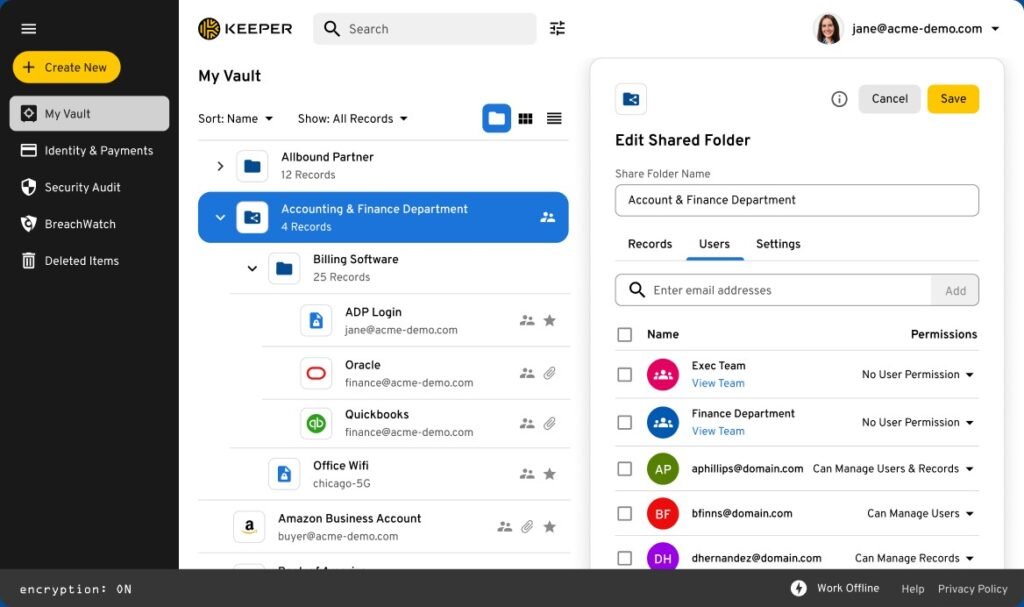
Creating Strong Passwords: The Basics
Ah, passwords. The digital keys to our online kingdoms. Crafting a strong password is like building a fortress; you want it to be sturdy enough to keep out unwanted visitors but easy enough for the rightful owner to access. As the great Steve Wozniak once said, “Never memorize something that you can look up,” and in the case of passwords, it’s best to create unique combinations that even the most seasoned hacker would have trouble cracking.
When it comes to the basics of creating a secure password, simplicity is our enemy and complexity is our ally. As technology evolves, so do the methods of those seeking to breach our defenses. So, let’s not make it easy for them. Mix upper and lowercase letters, sprinkle in numbers, and top it off with special characters for good measure. No need to make it a brain teaser, but let’s aim for something more substantial than “123456,” shall we?
Remember, folks, a strong password is like a good joke – it should be original, memorable, and not something you share with just anyone.
Understanding Password Cracking Techniques
Let’s dive into the fascinating world of password cracking techniques, where cyber-criminals try to outsmart our digital defenses with their cunning tactics. Picture it as a virtual game of cat and mouse, but with much higher stakes. These cyber thieves employ various methods to crack passwords, from the brute force approach of trying countless combinations to the more sophisticated techniques involving algorithms and advanced software. It’s like a high-tech heist, but instead of vaults filled with cash, they’re after our personal information and sensitive data.
In this digital age, it’s crucial to understand the dangers lurking in the shadows of cyberspace. As the renowned cryptographer Martin Hellman once said, “The best defense against any attack is knowledge.” By familiarizing ourselves with the ways in which hackers attempt to crack passwords, we can better protect ourselves and our digital assets. It’s a constant battle of wits between the defenders and the intruders, each striving to outsmart the other in this ever-evolving cyber landscape. So, buckle up and get ready to delve into the intriguing world of password cracking techniques, where the stakes are high, and the risks are real.
Ah, the thrill of unraveling the mysteries of encryption and privacy in the digital realm! Who knew that a string of characters could hold such power and vulnerability? Remember, in this game of digital cat and mouse, it’s not just about creating strong passwords but also staying one step ahead of those crafty cyber-criminals. Stay curious, stay vigilant, and may your passwords be ever resilient against the forces of darkness lurking in the shadows of the online world.
Choosing a Secure Password Manager
When it comes to choosing a secure password manager, it’s like picking the perfect outfit for a date – you want something that looks good, makes you feel confident, and most importantly, keeps you safe from any potential mishaps. Think of a password manager as your trusty sidekick in the world of cyberspace, helping you navigate the treacherous waters of online security with ease and style.
In a digital age where hackers are sharpening their virtual knives to slice through your passwords like a hot knife through butter, a robust password manager is your best defense. As the legendary cryptographer Whitfield Diffie once said, “Using encryption on the Internet is the equivalent of arranging an armored car to deliver credit card information from someone living in a cardboard box to someone living on a park bench.” So, why not arm yourself with the digital equivalent of a vault to guard your precious online identities and secrets? With a reliable password manager, you can create complex and unique passwords for each of your accounts, store them securely, and access them with ease whenever needed.
Utilizing Two-Factor Authentication
Two-factor authentication, the dynamic duo of password protection. It’s like having a bouncer at the digital door, making sure only the VIP (Very Important Person) – that’s you – gets in. You punch in your password, and then you get hit with that second factor, whether it’s a code sent to your phone or perhaps a fingerprint scan. It’s that extra layer of security that keeps the cyber villains at bay.
But why stop at two factors when you can have three, four, or maybe even five? As they say, the more, the merrier! It’s like locking your front door, activating the alarm, installing a moat, and hiring a dragon to guard your treasures – okay, maybe that’s a bit extreme, but you get the idea. The more hurdles you throw in the cyber criminal’s path, the better your chances of keeping your digital kingdom safe. So go on, embrace the power of two-factor authentication and lock down your online fortress like a pro!
Implementing Password Best Practices
Ah, passwords – the digital keys to unlock the mysteries of our online lives. In a world where cyber threats lurk around every corner, implementing password best practices is akin to fortifying the virtual walls that safeguard our sensitive information. So, what are these best practices, you ask? Well, let’s break it down in a way that even your technologically-challenged Aunt Mildred can understand.
First things first, forget about using “password123” or “123456” as your go-to password. As the great cryptographer Whitfield Diffie once said, “You don’t want to use the same password you use everywhere because if one is compromised, then they’re all compromised.” It’s like leaving your doors wide open for cybercriminals to saunter in and help themselves to your personal data buffet. Instead, opt for a mix of uppercase letters, lowercase letters, numbers, and special characters for a password that’s as complex as a Rubik’s Cube in a tornado. Remember, your pet’s name or favorite sports team just won’t cut it in the world of cybersecurity.
Avoiding Common Password Mistakes
Avoid those common password mistakes, folks! I mean, let’s face it – we’ve all been guilty of setting a password like “123456” or “password” at some point. And hey, who can blame us? Trying to come up with yet another complex combination of characters and symbols can feel like trying to crack a secret code. But let me tell you, it’s worth putting in the effort to make sure your passwords are strong and secure.
Think about it this way – the weaker your password, the easier it is for cyber bad guys to break in and wreak havoc on your accounts. As the legendary computer programmer, Mark Burnett once said, “The only truly secure system is one that is powered off, cast in a block of concrete, and sealed in a lead-lined room with armed guards.” Now, I’m not saying you have to go to those extremes, but a little extra effort in creating a robust password can go a long way in keeping your digital life safe and sound. Remember, it’s all about finding that sweet spot between complexity and memorability – so ditch the obvious choices and get creative!
Keeping Passwords Safe from Phishing Attacks
Phishing attacks are like the chameleons of the cybersecurity world – constantly changing and adapting to trick even the savviest of internet users. It’s basically the digital version of someone trying to convince you they’re a long-lost relative in need of cash. Sneaky, right? So, how do we outsmart these cyber tricksters and keep our passwords safe from their sneaky clutches?
First things first, always be skeptical of unexpected emails or messages asking for personal information or urgent action. As my wise old friend Cory Doctorow once said, “The single most important advice I give people these days is to enable two-factor authentication on their most important accounts.” It’s like adding an extra lock on your virtual front door – making it harder for those pesky phishers to weasel their way in. And yes, it may cause a bit of extra hassle, but hey, better safe than sorry, right? Remember, a little dose of paranoia can go a long way in the wild west of the internet.
Exploring Biometric Authentication Options
Biometric authentication, the fancy tech lingo that makes you feel like a spy unlocking your phone with your fingerprint. It’s like James Bond meets cybersecurity. Forget about pesky passwords that you always forget because who can remember a string of characters and symbols anyway? Biometric authentication is all about using something unique to you, like your fingerprint or facial recognition, to keep your digital life on lockdown. It’s like your phone saying, “Hey, I know it’s you, no imposters allowed!”
With biometric authentication, it’s all about adding that extra layer of security without the hassle. As the great technologist Steve Jobs once said, “In most people’s vocabularies, design means veneer.” And boy, does biometric authentication have the sleek design to match its functionality. Imagine feeling like a secret agent every time you unlock your device just by showing your face or tapping your finger. It’s like geek chic meets tech-savvy elegance. Say goodbye to those frantic searches for the perfect password and hello to a more secure and seamless way to protect your digital assets.
The most interesting part about biometric authentication? It’s like having your very own secret weapon against digital intruders. It’s the modern-day shield that keeps your information safe and sound, all while making you feel like a tech-savvy superhero. Who knew that your fingerprint could be the key to unlocking a whole new level of security and sophistication in the digital age? With biometric authentication, you’re not just protecting your data you’re embracing the future of cybersecurity with a touch of style and flair.


